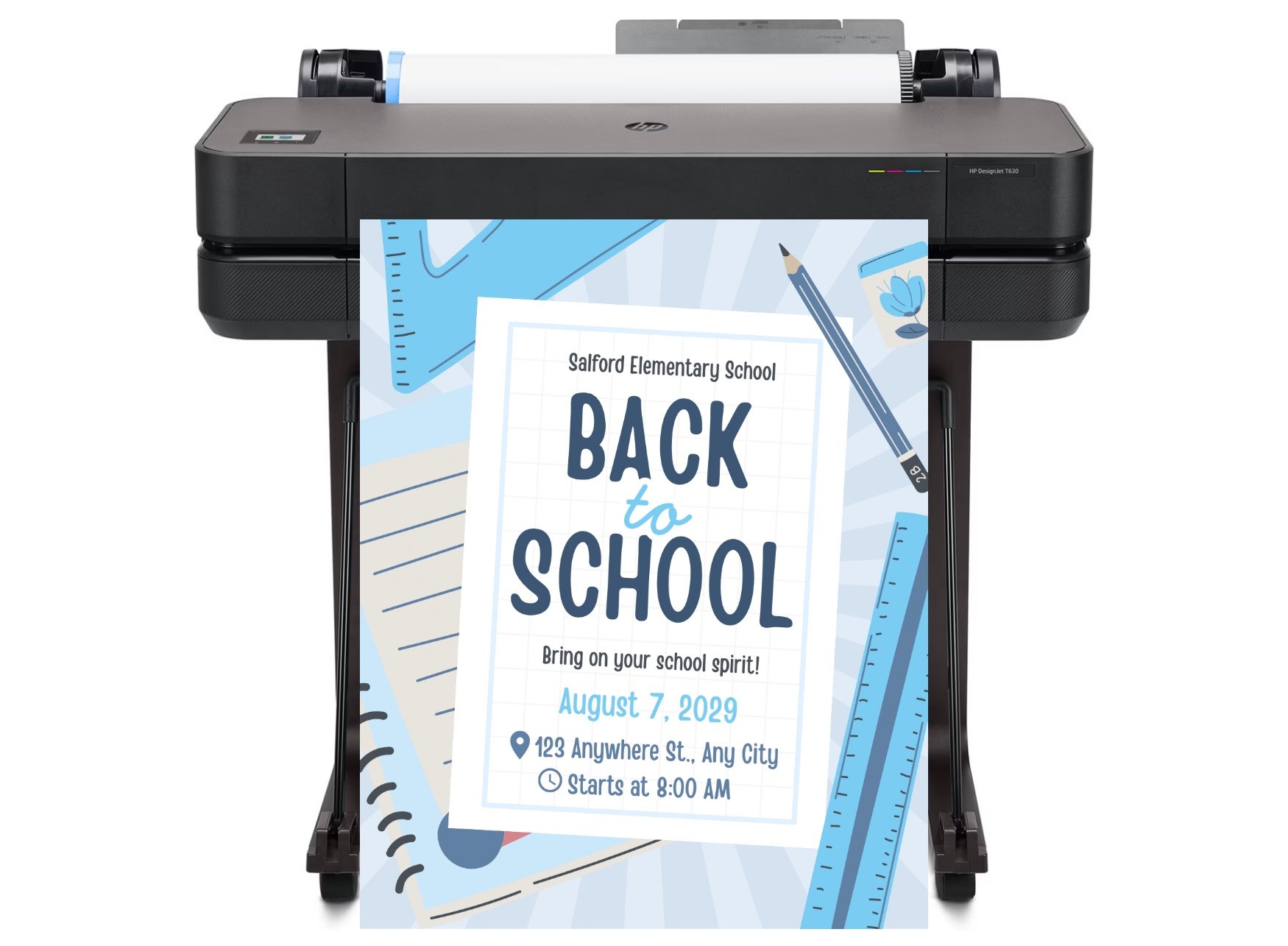
DISCOUNTED EDUCATION PRICING! CALL 1-877-891-8411. We Gladly Accept School Purchase Orders!

Equity in education is more than a vision—it’s a responsibility. For schools receiving Title I or other grant-based funding, communication and family engagement are critical to bridging the gap between home and classroom. Yet many schools struggle to provide consistent, accessible, and multilingual information to parents and students.
This is where poster maker machines play an unexpectedly powerful role. More than just a printing device, they become a tool for inclusion, communication, and cost-effective outreach. From parent nights to bilingual signage, poster makers help schools turn funding into impact.
In this guide, we’ll explore how Title I and grant-funded schools can leverage poster maker machines to support equity and engagement. Let’s just in and explore all the applications for these amazing machines.
Question: What makes poster maker machines such a valuable resource for Title I and federally funded schools?
Answer: Title I schools serve high percentages of students from low-income families. Clear communication, parent engagement, and accessible resources are essential—but budgets are often stretched thin. Outsourcing posters, signs, and large visuals can cost hundreds of dollars per project. Poster maker machines eliminate that dependency by enabling schools to produce professional-quality materials in-house, at a fraction of the cost.
Poster maker machines empower Title I schools to create cost-effective, multilingual, and inclusive communication tools for students and families.
By aligning with Title I’s goals—improving parent engagement, equity, and student outcomes—poster makers deliver both practical and financial benefits.
Parents of Title I students often juggle work, language barriers, and limited access to digital tools. Clear, visible communication can make all the difference in whether they feel connected to the school community.
How can poster makers help?
Enlarged letters and posters ensure that key information reaches every parent, regardless of language or digital access.
This visibility reduces confusion, increases attendance at events, and builds stronger trust between schools and families.
Question: How can poster makers support English Language Learners (ELLs) and their families?
Answer: Title I schools often serve highly diverse populations. Traditional communication—whether in English or on a small handout—doesn’t always reach every family effectively. With a poster maker, schools can:
A middle school serving Spanish-speaking families used a poster maker to print large bilingual “How to Access the Parent Portal” guides. These visuals were displayed at registration events, leading to a 30% increase in portal sign-ups.
Family engagement is a cornerstone of Title I programming, but attendance can be inconsistent. School poster makers offer schools an affordable way to promote and support these events.
Poster maker machines transform family engagement nights into immersive, interactive experiences that strengthen school-home connections.
By visually reinforcing the value of attendance, schools create a welcoming atmosphere where parents feel invited to participate.
Administrators often ask: Is a poster maker worth the investment compared to outsourcing?
The numbers speak for themselves.
ROI Example:
A district that hosted monthly family nights calculated that outsourcing large posters would cost over $7,200 annually. Their in-house poster maker paid for itself in less than one year, with ongoing savings every cycle.
Poster makers quickly pay for themselves, making them one of the most cost-effective equity tools available for Title I programs.
Title I, Title III (language acquisition), and ESSER grants all emphasize measurable outcomes in family engagement and student achievement. Poster maker machines directly align with these requirements.
Grant-Funded Applications Include:
Because school poster makers serve multiple departments—parent involvement, curriculum, administration—they often qualify under a range of funding categories.
Equity isn’t just about parents—it’s also about empowering students. Poster makers can give students a voice by allowing them to design and print their own visuals.
This democratizes access to design tools that might otherwise be limited to more affluent schools.
Q: Are poster maker machines complicated to use?
A: No. Most school-focused machines are designed for teachers and staff, with simple interfaces and quick print functions.
Q: Can Title I funds really be used to buy poster makers?
A: Yes. As long as the purchase is tied to federal program goals like parent engagement, communication, or instructional support, poster makers qualify as allowable expenses.
Q: Do schools still need posters in a digital age?
A: Absolutely. Not every family has reliable internet or email access. Large, visible posters ensure equity by reaching all parents, not just those online.
When schools invest in a poster maker machine, they’re not just buying hardware. They’re securing a long-term tool for equity, communication, and engagement.
From enlarged parent letters to bilingual signage, from family engagement nights to student-led projects, poster makers help Title I schools bridge communication gaps and foster inclusion. They save money, increase visibility, and most importantly—ensure that no parent or student is left behind.
Poster maker machines turn Title I funding into visible, lasting impact—strengthening connections between schools, families, and communities.